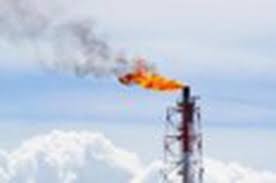Methanotrophs : Recent Study

The recent study revealed that the Methylotuvimicrobium buryatense 5GB1C a Methanotroph could potentially remove methane from major emission sites.
- Methanotrophs are a diverse group of gram-negative bacteria that are related to other members of the Proteobacteria.
- Methanotrophic microorganisms oxidise methane to harness energy under oxic and anoxic conditions.
- They grow best when the methane concentration is around 5,000-10,000 parts per million (ppm).
- Methylotuvimicrobium buryatense 5GB1C bacterial strain consumes methane, which is over 85 times more potent than carbon dioxide (CO2).
- This bacteria performed the best at 500 ppm. Further tests also showed that this strain grew well even at 200 ppm.
- It can grow at low methane concentrations ranging from 200-1,000 ppm. These features make this strain a promising candidate for methane removal technology.
- Bacteria produce biomass after consuming methane. This biomass can be used as feed in aquaculture.
- For every tonne of methane consumed, the bacteria can generate 0.78 tonne biomass dry-weight methane.




